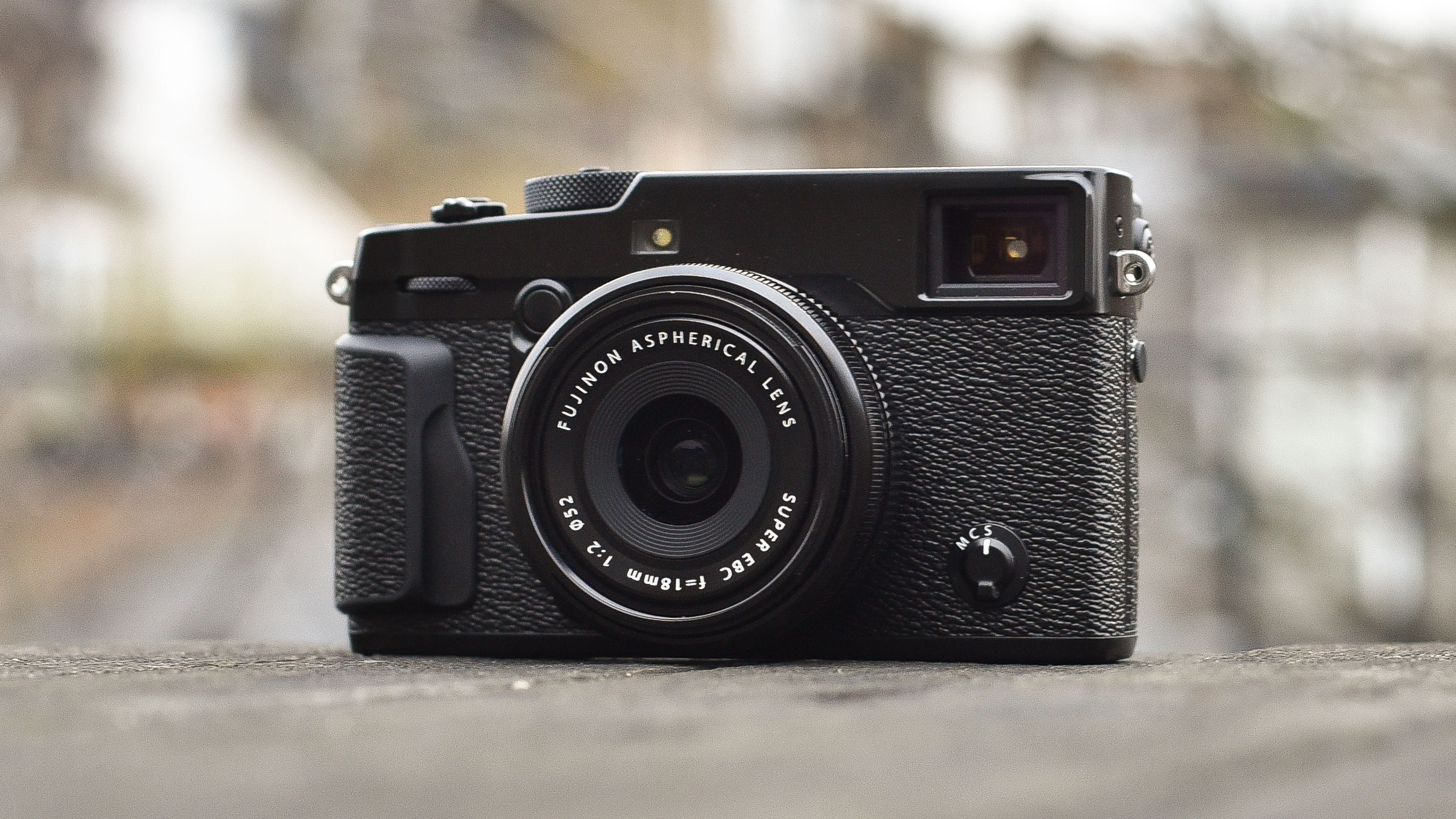Why you can trust TechRadar
The X-Pro2 has been designed and constructed to a standard befitting its four-figure cost. Built around a four-panel, magnesium-alloy chassis, the body feels just as solid in the hands as the original X-Pro1. Furthermore, with 61 seals at various points of potential water and dust incursion and protection down to -10 degrees, Fuji also promises that the camera can be used in testing weather.
While the camera is not exactly small, it still manages to fit inside an average coat pocket when fitted with either the 18mm f/2 R or 27mm f/2.8 XF lenses. Its ergonomics show Fuji's intentions for it to be partnered with smaller and lighter optics, particularly prime lenses, rather than the likes of the XF 50-140mm f/2.8 R LM OIS WR and XF 16-55mm f/2.8 R LM WR ASPH zoom lenses, which really require the more substantial grip of the X-T1.
The X-Pro2's grip is more defined than the flatter grip on the X-Pro1, and walking around all day with the camera in my hand, I found the X-Pro2 provided a more secure hold at the slight expense of comfort. That's not to say that it's uncomfortable, just that the flatter design is perhaps more accommodating to different hands.

There are no doubt many photographers who would have preferred the X-Pro2 to have sported an tilting or side-articulating LCD screen with touch functionality, particularly when you consider that the X-Pro 2 is perfectly suited to street and snapshot photography where such features make a considerable difference. One argument against this is that any kind of tilting display compromises a model's overall solidity. Nevertheless, the screen shows lots of detail and excellent contrast, and its wide viewing angle makes it slightly easier to use away from standard shooting positions.
Much of the top plate is the same as the X-Pro1's, although the larger exposure compensation dial, which is now marked with an extra EV step in each direction and a 'C' function to extend this even further to -/+5EV is welcome. Comparing the torque of the exposure compensation dial to that of the X-Pro1's reveals that its movement is tighter but during this test there were a number of occasions where the dial was 1/3EV out of line, which only became apparent after having taken a number of images at that setting. This is potentially partly down to its larger circumference, making it more exposed.

The changes Fuji has made to the shutter-speed dial from the X-Pro1 are largely positive. Being marginally taller and less obstructed by the top plate makes it noticeably easier to turn, while the slightly finer milling around the edges also helps with purchase. The angle between each setting on the shutter-speed dial has decreased from the X-Pro1, partly to accommodate the additional 1/8000sec option but largely to make room for a new window that lets you view the ISO setting that's adjusted via a dial incorporated within the shutter speed dial. The two turn together as standard, with sensitivity only changing when the dial is lifted upwards.
The only annoyance here is that when manually adjusting shutter speeds, the markings on the inner dial are often either upside down – particularly at the commonly used 1/30-1/250sec settings – or at some other slightly awkward angle. With no illumination, there's no way to see this in darker conditions and I found the window's reflectiveness meant that reading it in brighter conditions was sometimes problematic; in these conditions I resorted to reading the value at the base of the LCD screen which changed as this was adjusted.
Sign up for breaking news, reviews, opinion, top tech deals, and more.

Together with a new command dial around the front of the camera, one of the most positive changes from the X-Pro1 is the inclusion of the mini joystick controller on the back of the camera for setting the AF point. Unlike on some other camera bodies, where this control is awkwardly placed where the left-eye shooter's nose would be, there is enough space here to continue using the viewfinder without anything getting in the way. The control not only protrudes far enough for comfortable operation, but it also moves freely enough for the desired point to be easily reached, returning to the centre of the frame when pressed in. While this process was far from difficult on the X-Pro1 – you had to press the AF button on the left-hand side of the camera before using the menu pad's directional buttons to reach the desired AF point – it's great that Fuji has consolidated it into a single control here. Given how many AF points there are, though, it would be welcome to have the option of selecting alternative focusing patterns with fewer points, as this would speed up their selection.
It's also possible to magnify the centre of the frame to check focus by pressing in the rear command dial, and this serves the same purpose when playing back images, zooming in to 100% in one press; this should really be a standard feature on any interchangeable-lens camera, but it's surprising how seldom it's seen. For whatever reason, though, this dial is recessed much further into the body than on the X-Pro1, almost to the point of it not protruding at all, which makes this action a little more awkward than it ought to be.
